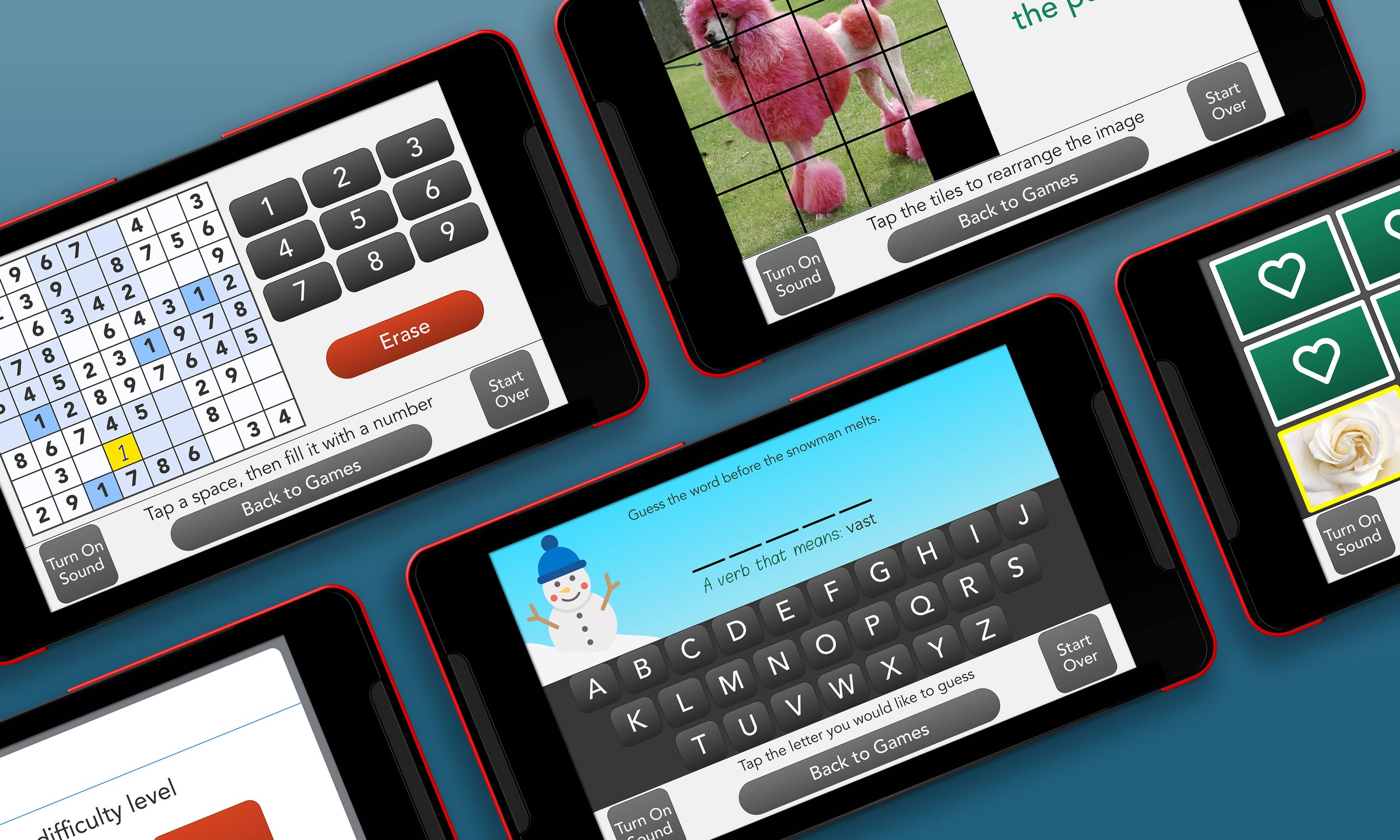Inclusive Play
Enhancing Game Accessibility
Making Games More Accessible and Enjoyable for Seniors
Project Overview
Many of our digital games for super seniors (80+) had accessibility gaps that made gameplay frustrating. Players couldn’t save progress, low contrast impaired readability, and inconsistent navigation increased cognitive load.
I led usability improvements across a suite of 20 games, with this case study focusing on Sudoku, Tiles, Bingo, and Hangman.
Despite development constraints, we prioritized high-impact updates like game resume, difficulty selection, and standardized high-contrast UI. These changes led to measurable improvements, including a 35% increase in Sudoku’s daily playtime and a 31% boost in Hangman’s total plays.
21k
Monthly Average Users
+33%
Engagement Average
20
Games Updated
Methods
We used a mix of heuristic evaluations, user feedback analysis, and data-driven insights to identify key usability challenges and measure the impact of our changes.
Heuristic Evaluations
We conducted a comprehensive usability review across all 20 games, identifying accessibility barriers and interaction challenges.
This included evaluating contrast, navigation clarity, text readability, and overall ease of use. The goal was to pinpoint design flaws that could impact seniors and low-vision players.
User Feedback
In addition to analyzing direct user feedback from reviews, surveys, and in-app support requests, we met with a group of super seniors with vision challenges to gather insights on what would make gameplay easier and more enjoyable.
Internal data helped validate these findings and prioritize solutions with the highest impact.
Engagement Metrics
To measure the effectiveness of our updates, we tracked key engagement metrics before and after implementation, including total playtime, daily active users (DAUs), and feature adoption rates.
We also monitored post-release feedback to assess how players responded to the changes and identify any areas for further refinement.
Key Insights
Contrast & Readability Were Major Pain Points
Low contrast and small text made gameplay difficult. Improving both made the games more accessible.
Better Game Flow Was Essential
Restarting every session was frustrating. Adding a resume feature kept players engaged longer on games where it wasn't already present.
Difficulty Selection Boosted Engagement
Players wanted control over difficulty levels. Giving them options led to longer play sessions.
Consistency & Text Legibility Needed Fixing
Inconsistent color, layouts, and spacing made gameplay and navigation harder to follow. Standardizing these reduced cognitive effort and improved clarity.
More Context Clues Improved Usability
Subtle cues, like adding small instructions to the game, helped players feel more confident in their moves. This led to a new standard of including clear gameplay instructions by default for future games.

The improved games have more rich color, instructions, and improved usability.
Final Thoughts
This project led to measurable improvements in engagement, usability, and accessibility across GrandPad’s gaming suite.
Improving game flow and difficulty selection emerged as key drivers of player retention, while contrast and readability fixes addressed widespread usability issues. User feedback shaped high-impact updates, and the addition of new seasonal content and new imagery boosted engagement in Hangman, Memory, and Tiles.
Beyond the numbers, these changes set a new standard for inclusive game design, ensuring that older adults can play with ease and confidence.



